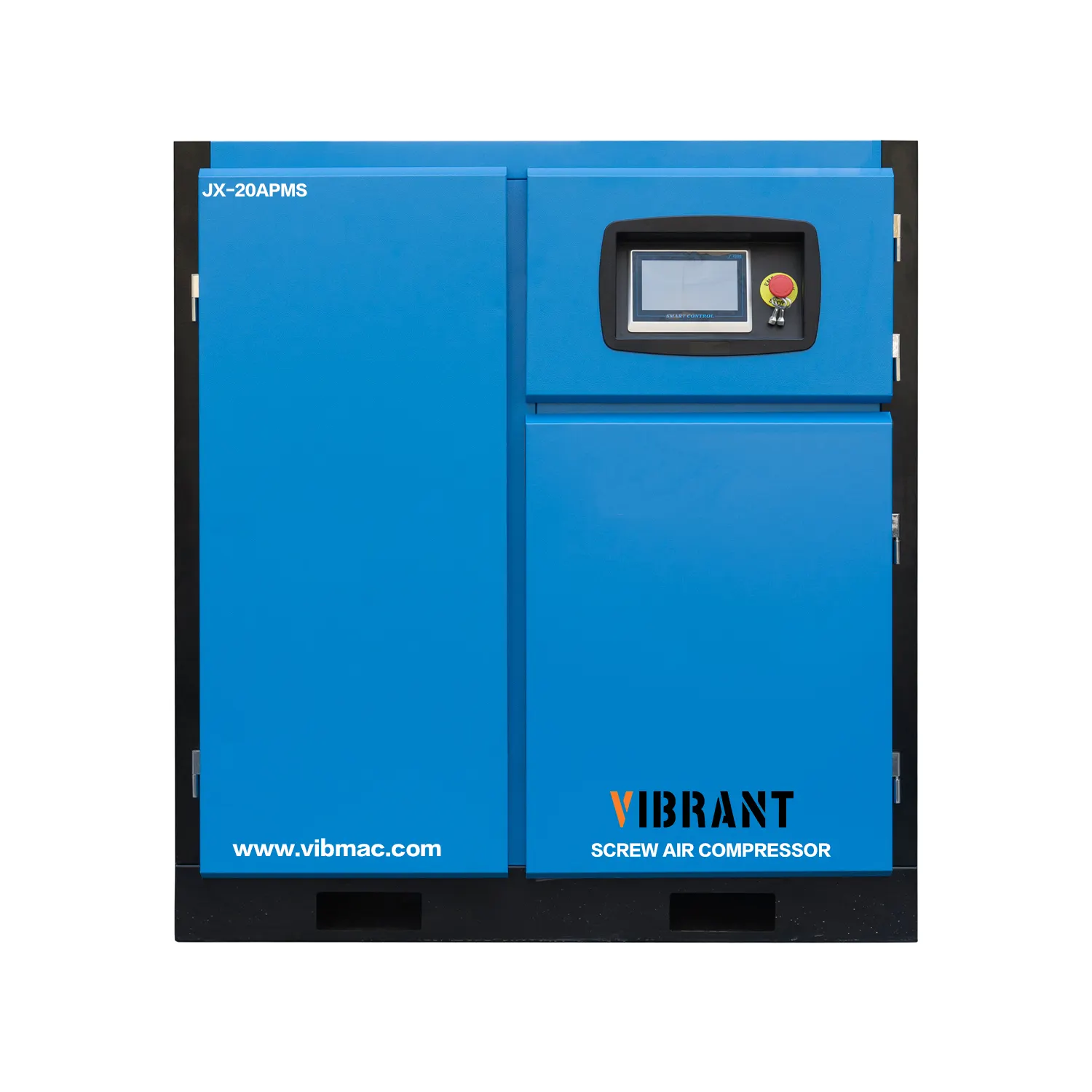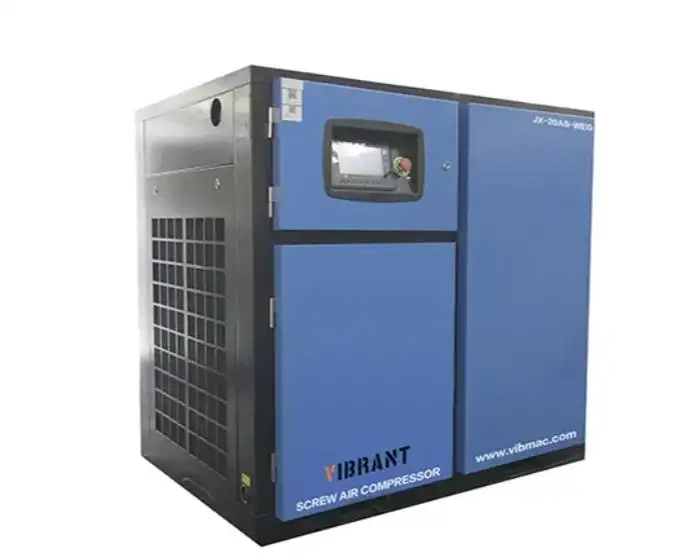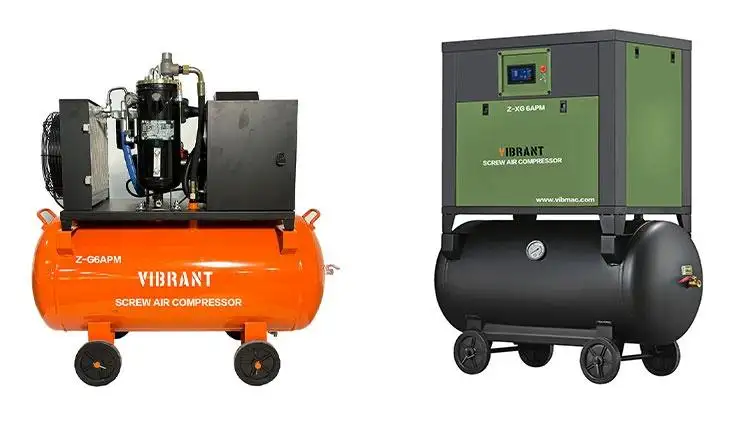
Study on System and Energy Saving Design of Hazardous Waste Disposal Plant Air Compressor Station
2024-04-03
Because of the variety of materials to be disposed of in hazardous waste disposal plant and the complexity of the material disposal methods, most of the equipment is operated intermittently, and the compressed air consumption is large and fluctuates greatly. Rationalizing the compressed air system of such plants and maximizing the use of waste heat generated by the compressor units have always been problems. Therefore, the planning and design of facilities related to the air compressor station system of this type of plant is of great significance for the efficient and low-consumption operation of the whole plant.
1. System planning for air compressor station
The plant we study is a comprehensive hazardous waste disposal plant with a large treatment capacity, high gas consumption and fluctuating gas consumption. The nitrogen sealing system is set up in some of the plant's installations and tanks, with pneumatic valves, pneumatic diaphragm pumps, baghouse dust collector blowback, lance cooling, surge blowing, pneumatic conveying system, and so on. Therefore, the types of air source required for system operation are dry compressed air, instrument air and high purity nitrogen.
According to the air consumption of each planning device, the statistics are as follows: dry compressed air consumption is 5,294Nm3/min (normal), maximum is 6,244Nm3/min; instrument air consumption is 578Nm3/min (normal), maximum is 745Nm3/min; nitrogen consumption is 832m3/min (normal), maximum is 966m3/min; normal consumption of raw compressed air is about 142.8m3/min.
Considering the comprehensive working conditions, our company configures three sets of 60Nm3/min micro-oil screw air compressors and utilizes the original two sets of 30Nm3/min micro-oil screw air compressors (as a backup). There are 1 set of nitrogen generator (1000Nm3/h), 1 set of nitrogen booster (60Nm3/min), 1 set of micro-thermal adsorption dryer (20Nm3/min), 2 sets of freeze-dryer (60Nm3/min), and 1 set of freeze-dryer (45Nm3/min, special for nitrogen generator).
2. System design and control scheme of the air compressor station
2.1 Nitrogen system design
Name of main equipment: PSA nitrogen generator unit, air buffer tank, nitrogen buffer tank, nitrogen storage tank, air-cooled freeze dryer, nitrogen compressor, pipeline and electric control system supporting the whole system (including electrical cabinet, control cabinet, control switch, display screen, etc. which are required for this system).
Nitrogen (0.6MPa) use: purified compressed nitrogen is at a pressure of 0.6MPa (G), with an atmospheric dew point of not more than -40 degrees Celsius and an oil content of not more than 0.1ppm. Provide nitrogen sealing gas source, sensitive material transportation power source and purge gas source for each section of the plant.
Nitrogen (1.0MPa) use: purified compressed nitrogen is at a pressure of 1.0MPa (G), with an atmospheric dew point of -23 degrees Celsius and an oil content of no more than 0.1ppm, it provides nitrogen for the high-pressure part of certain sections of the device, as well as sealing and blowing air sources.
2.2 Nitrogen system operation: Waste Disposal Plant
The system is equipped with 1 PSA nitrogen generator (1000Nm3/min, 99.5% purity, inlet pressure 0.7-0.8MPa), 1 set of compressed air freeze dryer (60Nm3/min, exhaust atmospheric dew point of -23 degrees Celsius, inlet pressure 0.8MPa), 1 set of nitrogen process tank (carbon steel, 5.0m3, 0.6MPa), 1 set of 6kg nitrogen tank ( carbon steel, 5.0m3, 0.6MPa), 1 set of 10kg nitrogen tank (carbon steel, 2.0m3, 1.0MPa), 1 set of nitrogen booster (1.0m3, inlet 0.6MPa, exhaust 1.0MPa).
The compressed air prepared by the air compressor is roughly filtered and then enters the nitrogen making device cold dryer, the dry air after passing through the precision filter is processed and the qualified gas enters the nitrogen making machine. Part of the nitrogen with qualified purity after testing enters the nitrogen (0.6MPa) pipeline network of the plant through storage tanks, and the other part enters the nitrogen (1.0MPa) pipeline of the plant through storage tanks after being pressurized by nitrogen presses.
2.3 Air compressor system design
Equipment name: air compressor set, air storage tank, micro-heat adsorption dryer, cold dryer, as well as pipeline and electric control system supporting the whole system (including electrical cabinet, control cabinet, control switch, soft starter, frequency converter, etc. required for this system).
Usage of compressed air: compressed air from the air compressor is at a pressure of 0.8MPa, atmospheric dew point of -25 degrees Celsius, oil content of not more than 0.1ppm, supplying air for nitrogen system and instrument air system, supplying air for atomization of spray gun, backblowing of cloth bag, atomization of burner, pneumatic diaphragm pump, and so on.
Usage of instrument air: Air demand pressure is 0.7MPa, atmospheric dew point is -40 degrees Celsius, oil content is not more than 0.01ppm, supplying air for pneumatic actuators (such as pneumatic regulating valves, pneumatic switching valves, etc.).
2.4 Operation of the air compressor system: Waste Disposal Plant
The air compressor system is equipped with 2 sets of buffer air tanks (10m3, 0.8MPa), 3 sets of precision filters (including Class C, Class T, Class A, design inlet pressure 0.8MPa), 2 sets of cold dryers (70Nm3/min, 0.8MPa), 1 set of micro-thermal adsorption dryer (0.8MPa, exhaust capacity 27Nm3/min), the system is equipped with 3 sets of air compressors, the parameters of the air compressor (exhaust volume is 64.5m3/min, 0.8MPa), 2 sets of industrial frequency air compressor, 1 set of frequency conversion air compressor, configured with 2 sets of soft start cabinet, 1 set of frequency conversion cabinet. The treated and qualified gases are fed into the plant air network, instrument air network and nitrogen production system respectively.
3. Energy-saving design of the air compressor system: Waste Disposal Plant
In China, the total power consumption of air compressors is now close to 320 billion kWh. In order to save energy and reduce carbon dioxide emissions, it is particularly important to reduce the energy consumption of the air compressor system if technology and investment allow.
Automatic energy-saving control of each air compressor in this project is an effective means of controlling the low energy consumption of air compressors, so this system is equipped with an inter-control function component (inter-control cabinet): The air compressor/cooler/micro-thermal adsorption dryer in this system are all equipped with the function of joint control, and it is required that each air compressor can be used as the air end to control the normal operation of other air compressors or equipment.
The basic functions of the linkage control are described as follows: the main function of the linkage control is to control the start/stop (loading/unloading) and variable speed adjustment of 2 sets of industrial frequency and 1 set of inverter air compressor, manually adjust the upper and lower pressure limits, monitor the operation status of the three air compressors, with memory, save and real-time monitoring of the operation status signals of each unit, with RS485 communication protocol interface, which can realize remote communication function with other air compressors or DCS system of our side. The joint control function can be switched with the single machine control function. When the system load is small, it can automatically close one cold dryer and the inlet switching valve to realize energy-saving control, and when the system load increases more than the drying capacity of one dryer, it will open the other dryer, and the two dryers can realize the switching of the main engine and auxiliary engine.
a) Under the joint control state, press the system start button to start Unit A (variable frequency) through the frequency converter, and the output frequency of the frequency converter is adjusted step by step from low to high until it reaches the lower limit value of the pressure, and the frequency is automatically adjusted according to the change of the gas volume. If the frequency converter is adjusted to the maximum frequency, the system pressure still does not reach the lower limit value of pressure, after a period of delay, the B unit (working frequency) is started through the soft start system, the output pressure of the system rises, and if the output pressure reaches the upper limit value set by the system, the output frequency of the frequency converter supporting the A unit will be lowered until it reaches the lower limit value of pressure set by the system, and the system will be operated stably. If the frequency converter is adjusted to the maximum frequency, the system pressure still does not reach the lower pressure limit value, after a period of delay, the system output pressure rises and the pressure reaches the upper pressure limit value after starting unit C (industrial frequency) through the soft start system. Adjust the output frequency of frequency converter of unit A, the frequency is adjusted step by step from high to low until the lower limit value of pressure is reached and the system runs stably.
(b) When the compressed air consumption of the plant is reduced, the frequency of the inverter is reduced to stabilize the system pressure. When the frequency of inverter is reduced to the set value, the system pressure remains at the upper limit value, and after a period of delay, an unloading command is issued to unload one of the industrial frequency air compressors (B/C). Automatically adjust the output frequency of the frequency converter of unit A until the lower pressure limit value is reached, and the system is stabilized, and after a period of delay, shut down the one industrial frequency air compressor (B/C) that has been unloaded. When the compressed air consumption of the plant is further reduced, the frequency of the inverter is lowered to stabilize the pressure of the system. When the frequency of inverter is reduced to the set value, the system pressure is still at the upper limit value, unloading command is issued to unload one industrial frequency air compressor (B/C) which is running. At the same time, the output frequency of frequency converter of unit A is automatically adjusted until the lower limit value of pressure is reached, the system is running stably, and after a period of delay, the one industrial frequency air compressor (B/C) which is already in the unloading state is shut down.
Through the above adjustments, the equipment in the air compressor station can realize simultaneous constant pressure gas supply and maximize the energy consumption of the station to a low level.
4. Comprehensive utilization of waste heat of the air compressor unit
4.1 Waste heat of air compressor unit
There are three water-cooled oil-injected screw air compressors in the air compressor station of this project, with rated power of 355kW, rated exhaust pressure of 0.8MPa, rated air production of 62m3/min each, and the heat exchange demand of a single air compressor running at full load is 1045MJ/h, and the oil flow rate is 390L/min, and the water pressure lowered through the cooling of the oil cooler and the after-cooler was 0.85bar. Based on cooling water of water-cooled unit, add 1 set of upper and return water pipeline for heating, switch to heating line in winter, and switch to circulating cooling water in summer. Working condition in summer: using 800m3/h cooling water tower in the plant, the maximum flow rate of the input cooling circulating water is 108m3/h, the temperature of the upper water is 25℃, and the temperature of the return water is 32℃.
4.2 Utilization of waste heat from air compressor units: Waste Disposal Plant
(1) Heating conditions: according to the heat exchange demand of the air compressor unit and the existing room heating area of the plant, the project utilizes the waste heat of the unit to supply heat to the plant, and the total heating area of the plant is about 5800m2 (including 4600m2 of the comprehensive office building and 1200m2 of the auxiliary production room), the indoor configuration of the steel heater is 600mm high (with a center distance of 600mm, a height of 645mm, a piece distance of 80mm, 7 columns per group, and a maximum heat supply of 840w per group), with a single-group heat dissipation area of about 1.45m2, a total of 645 groups, and a total installation area of the radiators of about 935m2.
(2) Introduction to the heating system, the heating return water in turn through the aftercooler and oil cooler, the temperature from 34 ℃ to 49 ℃, three air compressor heating return water run in parallel, there are 1 set of circulating hot water tanks, 2 sets of circulating pumps (60m2/h, 45m, 11kW, 1 use with 1 spare), the actual total water supply is 55m2/h, the upper jellyfish in and out of the compressor group heat exchanger pipe diameter is 150, the upper return water of the total length of the pipeline is 570m, and the pump outlet pressure is 0.49MPa. The inlet water pressure to the aftercooler of the air compressor unit is 0.36MPa, the water pressure out of the oil cooler is 0.28MPa, the total system resistance is 0.34MPa, and the system runs smoothly.
(3) Introduction of the heating effect: The pipeline is insulated with 30mm rubber plastic, the temperature loss from the air compressor station to the farthest end is 3℃, the buildings supplied with heat have been done with exterior wall insulation, the lowest outdoor temperature is -10 ℃. In the coldest indoor season is measured average indoor temperature of 18.5℃ (shaded) or more. The heating period is from early November to early April of the following year. Before heating renovation, central air conditioning is used for winter heating, and the annual electricity consumption in heating season is about 95,500kWh. After heating renovation, the annual saving of air conditioning electricity is 86,000kWh, and the out circulating cooling water from the circulating water tower saves 6,300t of fresh water per year (make-up water after evaporation of circulating water and sewage disposal). The main scheme of the waste heat recovery system of this air compressor unit is shown in Figure 1.

Conclusion
Combined with the design and operation of the whole Waste Disposal Plant compressor station of a hazardous waste disposal enterprise, the functional configuration of the system equipment in the air compressor station is optimized according to the characteristics of the gas used by each device, and the selection of energy-saving measures and the related chain control means of the air compressor station system are explored. The energy-saving design of the unit itself and the comprehensive utilization of waste heat need to be comprehensively considered in a targeted manner according to the characteristics of each air-pressure station, and at the same time, it is also necessary to strengthen the research on related technologies to ensure that the energy-saving measures adopted can effectively reduce the energy consumption of production and life. Click here to read new blog.








